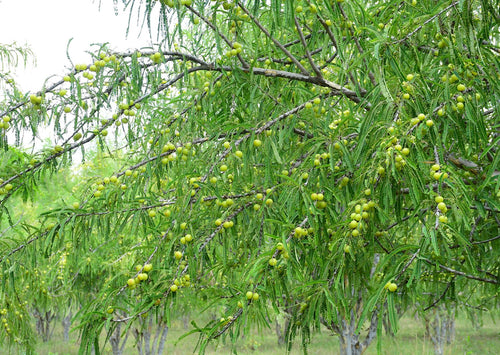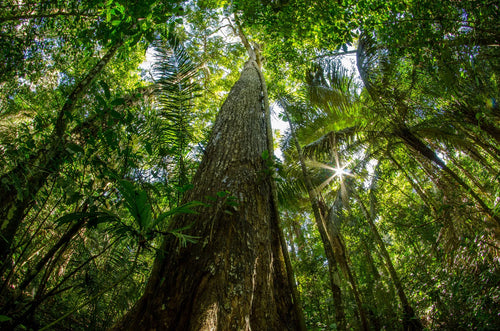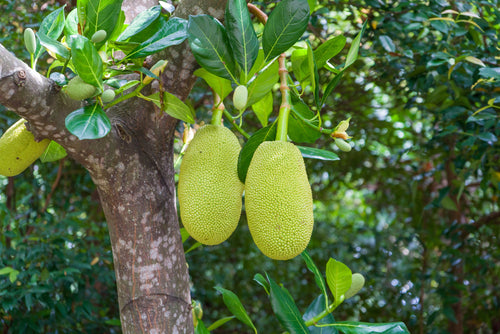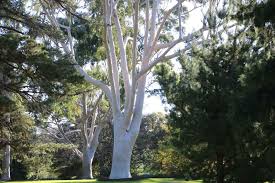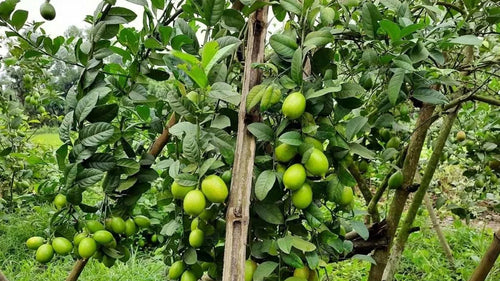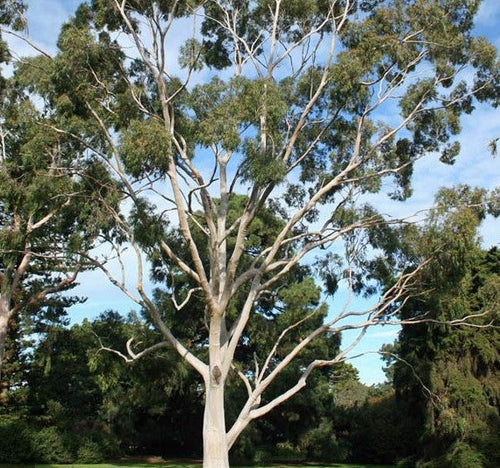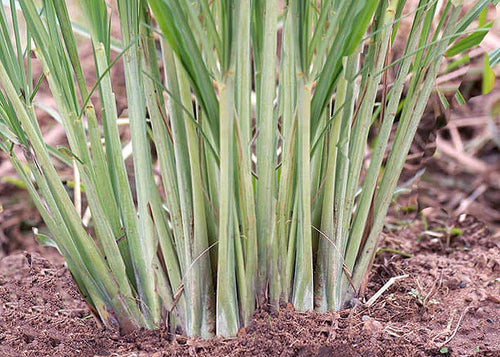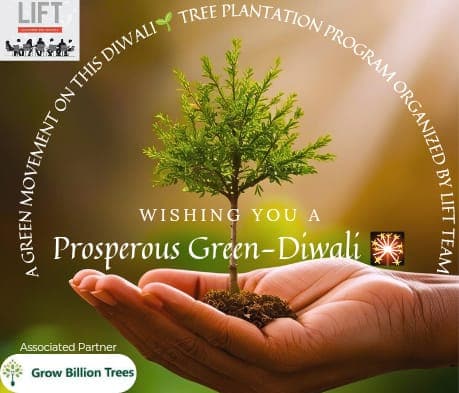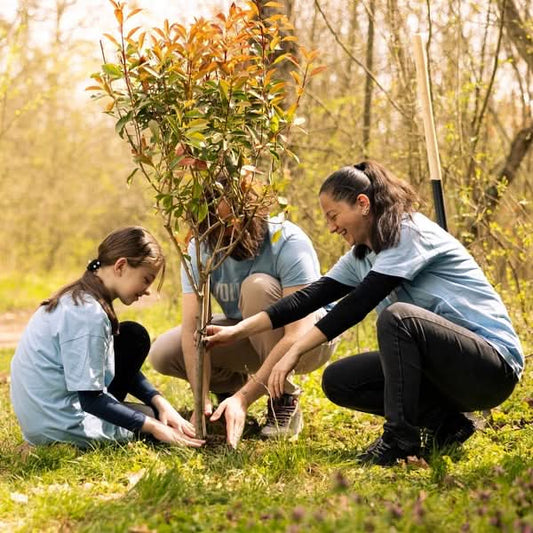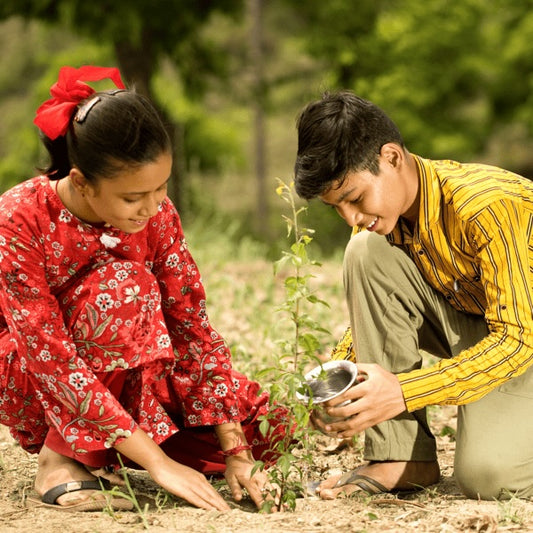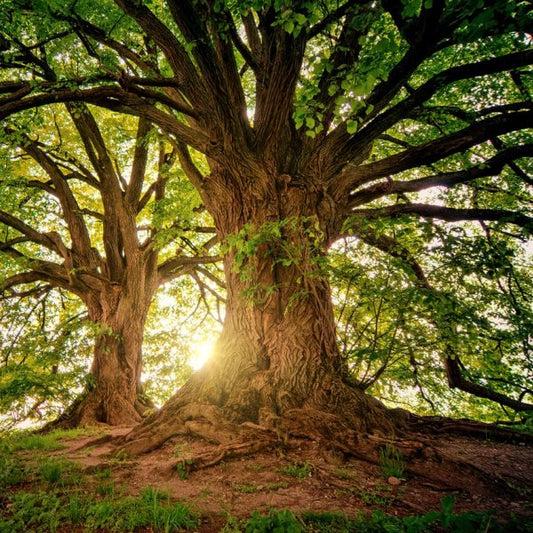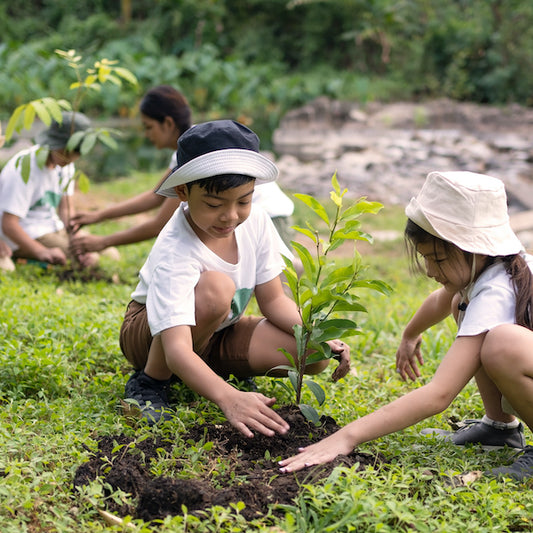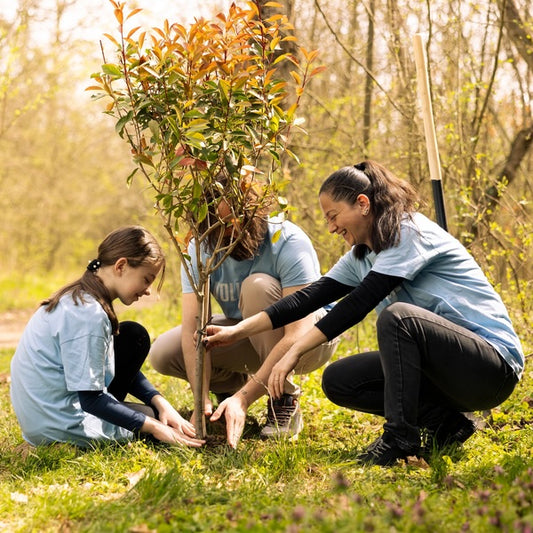Caterpillar's Legacy: A Learning forest in Chennai Nanganallur
Caterpillar has long been a global leader in innovation and engineering, driving progress and transforming industries for over a century. Its flagship Read more
Project Update 3



Project Update 2



















Project Update 1










Digital Forest
Forest with 2,000 Trees planned
Want to plant your tree now?
Plant a Tree @ 299Caterpillar's Legacy: A Learning forest in Chennai Nanganallur
Caterpillar has long been a global leader in innovation and engineering, driving progress and transforming industries for over a century. Its flagship brand, Cat, is synonymous with quality, reliability, and resilience values that extend beyond machinery and engines to reflect a strong, ongoing commitment to sustainability. More than just a symbol of equipment, the Cat logo represents hard work, determination, and a resilient spirit, values that Caterpillar is now channeling into environmental stewardship.
In celebration of its 100-year milestone, Caterpillar has launched a large-scale afforestation initiative involving the plantation of 50,000 native saplings across 13 schools in Chennai, Thiruvallur, and Hosur. This transformative effort aims to create sustainable green spaces within educational institutions, fostering both ecological restoration and environmental awareness among students.
This initiative marks the establishment of a "Learning Forest," an innovative green space designed to integrate ecological restoration with environmental education. By creating living, breathing forests within school campuses, the project nurtures a hands-on learning environment where students can explore biodiversity, climate action, and sustainability in real time.
The plantation at Nehru Government Higher Secondary School, Nanganallur, Chennai is a location under this initiative and involves the plantation of 2,000 native saplings using the Miyawaki afforestation technique. This dense, fast-growing forest will not only enhance the local ecosystem but also serve as a powerful educational tool, inspiring students to actively participate in environmental conservation.
The learning forest will also act as a natural green barrier, reducing noise pollution, regulating the climate, and fostering biodiversity by attracting birds and pollinators. Its impact extends beyond tree planting, it transforms the environment, creating a thriving ecosystem within the school premises.
Additionally, students will have hands-on involvement in tracking tree growth, measuring carbon absorption, and studying ecosystem development. This initiative blends classroom learning with real-world climate science, encouraging young minds to become environmental champions.
Through this project, Caterpillar reinforces its signature get-it-done attitude—this time, in service of the planet. As the company continues to build a better world, its efforts go beyond engineering machines to cultivating forests, nurturing knowledge, and shaping a more sustainable future.
Project Planning & Execution
No of Trees: 2,000
Plantation Location: Nehru Government Higher Secondary School - 1/3, 5th Main Rd, Nanganallur, Chennai, Tamil Nadu 600061
Plantation Date: 30 August 2025
Names of Species: Pungan, Badham, Naval, Red Sandel, Sisu, Mahogany, Jackfruit, Korukalika, Mango, Illupai, Amla, Vagai, Thaan tree, Arali, Idli small, Idli big, Parijadham, Hibiscus, Kakatan, Almanda Gold, Nandhiyavattam, Lemon, Magical, Vettivaru, Red Karisalangani, Marudhani, Karunthulasi.
Species Selection & Its Benefits:
The species selected for this agroforestry initiative were meticulously chosen to suit the local ecosystem and maximize ecological impact. A total of 2,000 trees were planted, comprising diverse native species across canopy, tree, shrub, and ground layers—each playing a vital role in building a self-sustaining and biodiverse forest.
The selection includes Pungan, Badham, Naval, Red Sandel, Sisu, Mahogany, Jackfruit, Korukalika, Mango, Illupai, Amla, Vagai, Thaan tree, Arali, Idli small, Idli big, Parijadham, Hibiscus, Kakatan, Almanda Gold, Nandhiyavattam, Lemon, Magical, Vettivaru, Red Karisalangani, Marudhani, and Karunthulasi, which consist of long-lived canopy and emergent trees that contribute to carbon sequestration, micro-climate regulation, and habitat provision for wildlife. Together, these species form the structural backbone of the agroforestry ecosystem, supporting ecological stability and resilience.
Fruit-bearing and pollinator-friendly species such as Jackfruit, Mango, and Amla support vital food webs by attracting birds, pollinators, and small mammals, while enriching communities with seasonal, nutritious produce. Jackfruit, for instance, is a tropical staple rich in vitamins C, B6, potassium, and dietary fiber, offering digestive support, immune benefits, and culinary versatility from sweet desserts to savory dishes, in addition to its durable, termite-resistant timber used in furniture and musical instruments .
Large canopy and timber species like Mahogany and Teak serve as long-term carbon sinks and habitat pillars, enhancing soil stability and biodiversity. Their lofty canopies and dense wood support both ecological functions and local livelihoods.
Culturally significant flowering and aromatic species—such as Parijadham, Hibiscus (Pink and Red), and other ornamental plants—enhance aesthetic value, draw pollinators, and often hold spiritual or traditional significance in local communities.
Nitrogen-fixing and soil-enriching species, particularly Pungan (Pongamia pinnata), improve soil fertility and support regeneration. Pongamia is resilient to drought, salinity, and heat, and its deep roots and nitrogen-fixing nodules enhance soil structure and fertility. Its seeds yield oil used in biofuel, agriculture, and traditional medicine, while the residual cake serves as a natural fertilizer and pest deterrent.
Together, this curated collection of trees, shrubs, and herbs contributes to a multi-layered ecosystem—ideal for techniques like the Miyawaki method—supporting rapid forest development, enhancing biodiversity, improving air quality, restoring degraded lands, and fostering long-term environmental stewardship and rural resilience.
Beneficiaries Details
-
Target Population: Employees, stakeholders, students, and staff of the Nehru Government Higher Secondary School, Nanganallur, Chennai
-
Age Group: Inclusive of all age groups, ensuring broad community participation.
-
Gender: Inclusive of all genders.
-
Social & Economic Status: Open to all social and economic backgrounds, emphasizing community involvement.
Planting Methodology and Its Advantages
Miyawaki Technique: The Miyawaki technique is a dense afforestation method that promotes rapid green cover using native plant species. It consists of rapidly growing vegetation that develops 10 times faster and becomes 30 times denser than conventional plantations. By closely planting a diverse mix of flora, it creates a self-sustaining ecosystem that requires minimal maintenance. This method enhances biodiversity, improves air quality, absorbs carbon dioxide, and restores degraded land. Due to its high-density plantation style, it is especially effective in urban areas, offering environmental benefits such as temperature regulation, noise reduction, and soil enrichment.
Four-Step Process of Planting a Miyawaki Forest:
1. Preparation and Analysis
- Site Analysis: Begin with a thorough analysis of the site, considering factors like soil type, water availability, and sunlight exposure. This analysis guides the selection of native plant species best suited for the location.
- Soil Preparation: Clear the area of weeds and debris. Loosen the soil by tilling and amend it with organic compost to enhance fertility and moisture retention.
2. Plant Selection and Planting
- Plant Selection: Choose native plant species that are fast-growing, drought-resistant, and indigenous to the region. Diversity is crucial to mimic natural forests and promote ecological balance.
- Planting Technique: Dig pits or trenches for planting saplings, ensuring each has enough space to grow. Plant at a high density, typically 3 to 5 times denser than traditional forests.
3. Care and Maintenance
- Mulching: Apply a thick layer of mulch around the saplings to suppress weeds, conserve moisture, and protect the soil from erosion. Mulch also enriches the soil as it decomposes.
- Watering: Initially, saplings need regular watering to establish their roots. Once established, they require less frequent watering, but regular monitoring remains essential.
4. Monitoring and Growth
- Regular Maintenance: Perform regular weeding, pruning, and pest control during the initial years. Miyawaki forests become self-sustainable as they mature but still require occasional maintenance.
- Monitoring: Keep track of the forest's growth and health, monitoring for signs of stress, disease, or pest infestations and taking timely action when needed.
Four Layers of a Miyawaki Forest
The Miyawaki method emphasizes creating a multi-layered forest that mimics natural forests to achieve rapid growth and high biodiversity. Here are the four layers typically found in a Miyawaki forest:
- Canopy Layer: This topmost layer consists of tall trees that provide the canopy. These trees are usually fast-growing species that can reach heights of 15 to 30 meters or more. They offer shade and protection to the layers below.
- Tree Layer: Beneath the Canopy layer is the tree layer, consisting of smaller trees and larger shrubs. These plants help fill in the gaps between the taller trees, contributing to the dense foliage that characterizes a mature forest.
- Shrub Layer: Below the canopy, the shrub layer includes smaller shrubs and bushes that provide additional structure and diversity to the forest. These plants play a vital role in attracting pollinators and providing habitat for various wildlife.
- Ground Layer: The lowest layer is the ground layer, comprising ground covers, ferns, and herbaceous plants. These plants help to retain moisture, suppress weeds, and protect the soil. They also contribute to the overall biodiversity by providing habitat for insects and microorganisms.


Each layer in a Miyawaki forest serves a unique purpose and contributes to the forest's resilience, biodiversity, and ecological functionality.
Advantages of the Miyawaki Technique
-
Faster Growth: Vegetation grows up to 10 times faster than conventional methods due to high-density planting, soil conditioning, and native species selection. It reaches maturity in 20-30 years instead of over a century, making it highly effective for ecological restoration.
-
Biodiversity Enhancement: The technique encourages a diverse mix of native species, supporting wildlife such as birds, insects, and small mammals, contributing to habitat restoration and ecosystem resilience.
-
Sustainability: After the initial 3 years, these green spaces become self-sustaining, requiring minimal intervention. Natural mulch helps retain moisture and suppresses weed growth, making maintenance cost-effective.
-
Soil Health Improvement: Organic matter decomposition enhances soil fertility, while root systems aerate the ground, improving water retention and preventing erosion, especially in degraded or sloped areas.
-
Microclimate Regulation: The dense vegetation reduces heat absorption, increases moisture release, and combats the urban heat island effect, improving air quality and energy efficiency in nearby structures.
-
Space Efficiency: This method allows for high-density planting in small areas, making it ideal for urban spaces, schools, and community parks, even on degraded land.
-
Ecosystem Restoration: By using native species, these forests seamlessly reintegrate with local ecosystems, supporting pollinators and maintaining ecological balance.
-
Low Water Consumption: Once established, the dense planting and bio mulch help retain moisture, reducing the need for frequent watering, making it a sustainable solution even in water-scarce regions.
Activities During Tree Plantation
As part of the Caterpillar 100th Anniversary Tree Plantation Initiative, a vibrant plantation drive was held at Nehru Government Higher Secondary School, Nanganallur, Chennai. This new forest expansion enhances the existing Learning Forest—a densely planted green classroom using the Miyawaki method. Designed to restore biodiversity, it brings environmental concepts to life, creating an immersive educational space rooted in real-world climate action.
In preparation, the school grounds were meticulously prepared with pre-dug pits, and native saplings were carefully positioned for optimal root establishment. Around 2,000 native saplings were planted under this initiative, covering diverse species across canopy, tree, shrub, and ground layers—designed to form a fast-growing, self-sustaining mini-forest. By building this foundation, Caterpillar has ensured that this environmental classroom will endure and flourish.
The planting drive featured enthusiastic participation from Caterpillar employees, who took part in planting and nurturing the saplings. Their hands-on engagement injected vibrant energy into the event, transforming the once barren school campus into a budding green sanctuary.With every sapling planted, conversations sparkled around broader themes of sustainability, climate resilience, and collaborative stewardship.
Beyond serving as a green barrier that reduces noise and moderates temperature, the dense plantation is already fostering a thriving microecosystem—inviting birds, pollinators, and other wildlife. Importantly, the forest doubles as a living lab: students will be able to track tree growth, monitor carbon sequestration, and study biodiversity growth firsthand. This intersection of greenery and learning embodies the very essence of experiential environmental education.
In reaffirming its century-long legacy, Caterpillar underscores that its commitment extends far beyond engineering—it includes nurturing life itself. By planting these saplings, Caterpillar is sowing symbols of hope and sustainability, creating living legacies for the students and communities of tomorrow.
Trees Planted
| Total Trees Planted: 2000 | |
| Total Species Planted: 27 | |
| Layer 1 | 9 species |
| Layer 2 | 4 species |
| Layer 3 | 8 species |
| Layer 4 | 6 species |
| Layer Category | S.no | Common Name | English Name | Quantity |
|
Canopy Trees
|
1 | Pungan | Pungan | 100 |
| 2 | Badham | Badham | 100 | |
| 3 | Naval | Naval | 100 | |
| 4 | Red Sandel | Red Sandel | 100 | |
| 5 | Sisu | Sisu | 100 | |
| 6 | Mahogany | Mahogany | 100 | |
| 7 | Jackfruit | Jackfruit | 75 | |
| 8 | Korukalika | Korukalika | 100 | |
| 9 | Mango | Mango | 100 | |
|
Trees
|
10 | Illupai | Illupai | 75 |
| 11 | Amla | Amla | 75 | |
| 12 | Vagai | Vagai | 50 | |
| 13 | Thaan tree | Thaan tree | 50 | |
|
Shrubs
|
14 | Arali | Arali | 50 |
| 15 | Idli small | Idli small | 50 | |
| 16 | Idli big | Idli big | 75 | |
| 17 | Parijadham | Parijadham | 50 | |
| 18 | Hibiscus | Hibiscus | 100 | |
| 19 | Kakatan | Kakatan | 75 | |
| 20 | Almanda Gold | Almanda Gold | 100 | |
| 21 | Nandhiyavattam | Nandhiyavattam | 50 | |
|
Herbs & Groundcover
|
22 | Lemon | Lemon | 75 |
| 23 | Magical | Magical | 75 | |
| 24 | Vettivaru | Vettivaru | 100 | |
| 25 | Red Karisalangani | Red Karisalangani | 25 | |
| 26 | Marudhani | Marudhani | 25 | |
| 27 | Karunthulasi | Karunthulasi | 25 |
Conclusion Elements
Impact
Direct Impact
| Parameters | Values | References |
| No. of Trees Planted | 2,000 | |
| Green Cover (Acres) | 0.07acres | |
| Carbon Sequestration Potential (KG) | 5 | Small to medium-sized trees can sequester around 10–48 kilograms (22–106 pounds) of CO₂ annually. https://onetreeplanted.org/blogs/stories/how-much-co2-does-tree-absorb |
| Carbon Sequestration by 2000 mature trees ( Tons/year) | 10 Tons | No. of Trees x Carbon Sequestration by 1 mature trees per year |
| Carbon Credit Equivalent | 10 | One carbon credit is equivalent to one tonne of carbon dioxide or the equivalent amount of another greenhouse gas. |
| Carbon Footprint of an avg Indian Citizen (Tons/Year) | 1.8 | https://www.iea.org/countries/india/emissions |
| Offsets Annual Carbon Footprint of (Adults) | 6 | Carbon offset by 2000 mature trees per year / Carbon Footprint of an avg Indian Citizen per year |
(This impact analysis is forward-looking (An urban-forest project matures in 3-5 years)
Indirect Impact
Community Impact
-
Environmental Awareness: Involving employees and local communities in the plantation drive fosters greater awareness about environmental conservation and encourages sustainable practices in daily life.
-
Employee Morale & Engagement: The initiative instilled a sense of pride, ownership, and teamwork among employees, strengthening their connection to the company’s sustainability goals and fostering a culture of environmental responsibility.
-
Inspiration for Change: By showcasing the rapid and dense growth of Miyawaki forests, this project has inspired organizations, institutions, and local communities to adopt this innovative afforestation method, encouraging widespread urban greening and ecological restoration efforts.
-
Cultural Shift: The initiative cultivated a long-term mindset of sustainability, encouraging participants to become advocates for green practices in both their personal and professional lives.
-
Enhanced Community Collaboration: Strengthened ties between corporate stakeholders, local authorities, and environmental groups, creating a collaborative approach to sustainability.
Environmental Impact
-
Biodiversity Conservation - By introducing native plant species, the project supports local wildlife, including birds, insects, and pollinators, fostering a healthier and more diverse ecosystem.
-
Carbon Sequestration – The planted trees act as natural carbon sinks, absorbing carbon dioxide and helping mitigate climate change by reducing greenhouse gas emissions.
-
Air Purification – Trees filter pollutants such as carbon monoxide, nitrogen oxides, and particulate matter, improving air quality and promoting a healthier environment.
-
Microclimate Regulation –The plantation reduces the urban heat island effect, cooling the surrounding area and helping to regulate temperature, making urban environments more comfortable.
-
Water Conservation - The bio mulch created by the plantation helps retain soil moisture, reducing the need for frequent watering and promoting efficient water use in the ecosystem.
-
Soil Health Improvement – The plantation enriches soil fertility by adding organic matter, improving soil structure, and supporting surrounding vegetation.
-
Erosion Prevention – Tree roots stabilize the soil, preventing erosion caused by wind and water, which helps protect infrastructure, roads, and green spaces.
- Noise Reduction – Green spaces serve as natural sound barriers, dampening noise pollution and contributing to a quieter, more peaceful environment.
Achievements
SDG Goals Achieved Through Miyawaki Plantation
-
SDG 3: Good Health and Well-Being – Caterpillar promotes community well-being by creating a green space that improves air quality, reduces pollution, and provides a calming, natural environment that supports better physical and mental health for students and residents.
-
SDG 4: Quality Education – Caterpillar has transformed the plantation site into a living learning space where students engage with nature, understand biodiversity, and develop environmental consciousness, enhancing their educational experience.
-
SDG 6: Clean Water and Sanitation – Through this initiative, Caterpillar contributes to water conservation by planting trees that support groundwater recharge, improve soil moisture retention, and reduce surface runoff, ensuring sustainable water availability in the area.
-
SDG 7: Affordable and Clean Energy – By increasing green cover and improving the microclimate, Caterpillar helps reduce the need for energy-intensive cooling solutions at the school, thereby supporting cleaner and more efficient energy use.
-
SDG 8: Decent Work and Economic Growth – Caterpillar’s project generates employment opportunities for local nursery workers, planters, and caretakers, while also building skills in sustainable land management and community-driven greening.
-
SDG 9: Industry, Innovation, and Infrastructure – Caterpillar adopts the innovative Miyawaki method of plantation, showcasing how forward-thinking environmental practices can be integrated into urban infrastructure for sustainable development.
-
SDG 11: Sustainable Cities and Communities – With this urban greening initiative, Caterpillar contributes to making Nanganallur more sustainable by reducing the urban heat island effect, enhancing livability, and building climate resilience in a rapidly growing area.
-
SDG 12: Responsible Consumption and Production – Caterpillar ensures responsible use of land and resources by selecting native tree species that thrive with minimal inputs, thus promoting long-term ecological sustainability and resource efficiency.
-
SDG 13: Climate Action – By planting trees that absorb carbon dioxide and mitigate rising temperatures, Caterpillar takes tangible climate action and helps combat the effects of climate change at the local level.
-
SDG 15: Life on Land – Caterpillar strengthens terrestrial ecosystems by restoring native flora, supporting local wildlife, and enhancing biodiversity in an urban environment through dense, diverse plantations.
-
SDG 17: Partnerships for the Goals – Caterpillar’s collaboration with Grow Billion Trees, local school authorities, and the broader community reflects the spirit of SDG 17—building strong partnerships to achieve lasting environmental and social impact.
ESG Achieved through Miyawaki Plantation
-
Environmental Impact: Caterpillar’s Learning Forest initiative, implemented using the Miyawaki method, delivers substantial ecological benefits. By planting dense clusters of native species, the project significantly boosts local biodiversity, creating a thriving microhabitat that supports birds, insects, pollinators, and other beneficial organisms essential to a healthy ecosystem. The dense green cover plays a crucial role in carbon sequestration, capturing carbon dioxide from the atmosphere and contributing meaningfully to climate change mitigation. In addition, the plantation aids in soil conservation, enhancing soil fertility, preventing erosion, and improving water retention capacity, which is vital for long-term land health and sustainability. This initiative also contributes to sustainable water management by reducing surface runoff and supporting groundwater recharge. Moreover, the natural cooling effect generated by the forest reduces surrounding temperatures, helping to counteract the urban heat island effect. This creates a more stable microclimate around the school, promoting comfort and environmental resilience in an urban educational setting. Through this multifaceted environmental impact, Caterpillar reinforces its commitment to ecological restoration, sustainability, and climate responsibility.
-
Social Impact: Caterpillar’s Learning Forest initiative embraces a community-centric approach by engaging employees, students, and local stakeholders in the creation and nurturing of green spaces. This inclusive participation fosters a sense of ownership, pride, and environmental responsibility, strengthening community bonds and instilling collective commitment toward sustainability. The presence of lush greenery around the school contributes to better air quality, reducing pollutants and promoting healthier, more pleasant surroundings for students and residents alike. These green areas also serve as calming recreational spaces, enhancing mental and physical well-being. Beyond environmental and health benefits, the initiative plays an important educational role. It acts as a living classroom for students and the local community, raising awareness about native species, conservation techniques, and sustainable living practices. In addition, Caterpillar’s project supports social development by creating local employment opportunities in nursery management, plantation activities, and long-term forest maintenance. These opportunities contribute to livelihood generation and community empowerment, making the initiative not just an environmental effort but a catalyst for holistic societal impact.
-
Governance Impact: Caterpillar’s Learning Forest project upholds strong environmental governance by adhering to transparent, ethical, and accountable practices throughout the planning, execution, and monitoring stages. The initiative follows a structured, well-documented approach aligned with both local environmental norms and global sustainability standards, reinforcing Caterpillar’s commitment to responsible corporate citizenship. By implementing the Miyawaki method, the project not only ensures ecological restoration but also demonstrates compliance with environmental regulations and best practices. Its long-term sustainability—requiring minimal maintenance after establishment—underscores Caterpillar’s dedication to durable and ethical environmental solutions.
Moreover, this initiative enhances institutional accountability, as it is grounded in measurable outcomes such as biodiversity improvement, carbon sequestration, and community engagement. Through these efforts, Caterpillar strengthens its governance model, setting an example for corporate responsibility while actively contributing to environmental protection and social well-being.
Building Communities
One of the most profound impacts of Caterpillar’s Learning Forest initiative has been the spirit of unity and collaboration it fostered. By actively involving employees, students, school authorities, and local community members, the project became more than just an afforestation effort—it evolved into a shared mission to cultivate resilient, sustainable green spaces and inspire environmental stewardship across generations.
-
Empowering Communities: This initiative actively engages Caterpillar employees and community stakeholders in the planting and maintenance processes. Their involvement fosters a sense of ownership over the green spaces, empowering individuals, especially students and youth, to take responsibility for their environment. As participants contribute to enhancing their surroundings, they build pride, purpose, and a collective commitment to sustainability.
-
Fostering Meaningful Partnerships: The Learning Forest brought together key collaborators, including Caterpillar, Grow Billion Trees, school leadership, and local communities, demonstrating the power of partnerships in driving long-term environmental and social impact. These collaborative efforts strengthen the shared vision of building greener, healthier, and more inclusive urban ecosystems.
-
Inspiring a Ripple Effect: As the benefits of the afforestation project become visible—improved air quality, enriched biodiversity, and increased community engagement—the initiative is inspiring other schools, organisations, and neighbourhoods to launch similar green projects. This ripple effect reinforces the value of urban greening and community-driven environmental action.
Caterpillar’s Learning Forest initiative exemplifies that true sustainability goes beyond tree planting—it’s about fostering environmental awareness among future generations, strengthening community partnerships, and cultivating a shared commitment to a greener, healthier, and more sustainable tomorrow.
Commitment by Grow Billion Trees
-
Ensuring Tree Survivability: GBT prioritizes native species, continuous monitoring, and soil health improvement using organic fertilizers. These efforts ensure sustainable growth and benefit communities.
-
Transparency & Accountability: GBT provides detailed reports on tree growth, survival rates, and carbon benefits, using geo-fencing and regular updates to maintain transparency and effectiveness.
-
Sustainable Plantation Efforts: GBT implements projects that balance environmental, social, and economic goals, addressing issues like urban heat islands and degraded farmlands. These efforts promote ecological balance, livelihoods, and long-term climate resilience.
-
Enhancing Ecosystem Health: By selecting native species and creating diverse habitats, GBT enhances biodiversity and ecosystem resilience, ensuring long-term ecological health and supporting wildlife.
-
Long-Term Impact: GBT’s initiatives tackle environmental challenges, foster climate resilience, and promote sustainable development while reducing carbon footprints.
Acknowledgment
We at Grow Billion Trees extend our heartfelt gratitude to everyone who contributed to the success of the Caterpillar Learning Forest initiative. This meaningful project, built on the foundation of environmental sustainability and community involvement, would not have been possible without the enthusiastic participation of Caterpillar employees, local stakeholders, and our implementation partners. Your collective efforts in planting and nurturing native trees are making a lasting impact, enhancing biodiversity, improving air quality, and creating green spaces that benefit both people and the planet. Together, we are not just planting trees; we are cultivating a legacy of sustainability and shared responsibility for a greener, healthier future.
To Caterpillar: We deeply appreciate your visionary leadership and unwavering commitment to sustainability through the Caterpillar Learning Forest initiative. As part of your 100th anniversary celebrations, your efforts to plant 50,000 saplings across 13 schools in Chennai, Thiruvallur, and Hosur are not just transforming landscapes—they are shaping the future. By establishing living forests within school environments, you are fostering a profound connection between young minds and nature. You are creating living classrooms where students can engage with ecology, climate science, and environmental stewardship firsthand. Your focus on native biodiversity, urban resilience, and long-term ecosystem health demonstrates how technology and nature can work hand in hand for a greener tomorrow. Together, we are planting the seeds of change, ensuring a healthier environment, empowered communities, and a more sustainable planet for generations to come.
To The School Management: The success of Caterpillar’s Learning Forest initiative would not have been possible without the wholehearted support and active participation of the school community at Nehru Government Higher Secondary School, Nanganallur. We extend our sincere appreciation to the school’s management, dedicated teachers, and enthusiastic students for embracing this initiative and becoming true co-creators of a greener, more sustainable future. By opening their campus to this transformative plantation effort, the school has not just provided space—it has become a steward of sustainability and a beacon of climate education. This vibrant green space now stands as a living classroom, offering students hands-on exposure to nature, biodiversity, and environmental responsibility. Their unwavering commitment to nurturing the saplings and embedding ecological values into everyday learning is helping shape a generation of environmentally conscious citizens. We deeply value the school’s vision, collaboration, and leadership in making this initiative meaningful, educational, and lasting.
To Our Ground Partners and Volunteers: Your expertise, dedication, and passion for sustainability have been instrumental in the success of this initiative. Your collaborative efforts have transformed urban landscapes into thriving green spaces, promoting environmental awareness and community involvement. This project is a testament to what can be achieved when organisations, communities, and environmental stewards come together with a shared vision.
Thank you for your unwavering support and commitment. Together, we are growing a greener, more sustainable future.
Closing Remarks
We extend our heartfelt gratitude for your unwavering support and collaboration on the Caterpillar Learning Forest initiative at Nehru Government Higher Secondary School, Nanganallur. The plantation stands as a powerful symbol of what can be achieved when corporate vision, environmental responsibility, and community engagement come together. This initiative not only commemorates 100 years of Caterpillar’s journey but also lays the foundation for the next century, one rooted in sustainability, innovation, and inclusivity.
By transforming a school campus into a thriving Miyawaki forest, this project goes beyond ecological restoration—it ignites curiosity, fosters climate consciousness, and empowers young learners to become future stewards of the environment. Every sapling planted is a promise—to nurture life, to protect biodiversity, and to create healthier, greener communities.
Your commitment to sustainable natural infrastructure is both visionary and impactful. It reflects Caterpillar’s broader mission of combining innovation, community engagement, and environmental stewardship to create meaningful change.
Through the active involvement of employees, the support of Grow Billion Trees, and the enthusiasm of students and educators, the Learning Forest reflects the shared commitment to building a better tomorrow. As these 2,000 trees grow, so too will the values they represent—resilience, renewal, and responsibility.
This is not the end, but the beginning of a lasting legacy—one where the spirit of Caterpillar’s centennial continues to inspire change, cultivate awareness, and drive sustainable action for generations to come.
We are proud to have partnered with Caterpillar on this important journey. Together, we are planting the seeds for a greener, healthier, and more inclusive future—one that will benefit generations to come.
Trees for Corporates
Trending
Most Popular
1. Agroforestry Benefits for Farmers
Agroforestry isn’t just a buzzword—it’s a game-changer for farmers. With Caterpillar Agroforest Initiatives, trees are integrated into farmland to improve soil health, conserve water, and provide shade for crops. Farmers can enjoy multiple revenue streams by harvesting timber, fruits, or medicinal plants alongside their usual crops. Agroforestry reduces soil erosion, attracts pollinators, and even improves microclimates, keeping crops cooler and healthier. Think of it as having a mini-ecosystem that works tirelessly while you sip your morning chai! By planting trees, farmers also contribute to carbon sequestration, helping combat climate change one sapling at a time. Biodiversity thrives, pests are naturally controlled, and crop productivity increases. Caterpillar Agroforest Initiatives make sure every tree counts, creating a balance between nature and agriculture. SEO tip- Focus on “agroforestry benefits,” “sustainable farming,” and “Caterpillar Agroforest Initiatives” to attract eco-conscious readers looking for practical solutions.
2. Mango Tree Plantation
Mangoes aren’t just delicious—they’re eco-warriors! Through Caterpillar Agroforest Initiatives, mango trees are planted to enrich soil, provide shade, and support biodiversity. A single mango tree can absorb up to 48 kg of CO₂ annually, making your agroforest a mini carbon-capturing hero. These trees create a perfect environment for understory crops like beans or turmeric, improving yields while reducing water stress. Pollinators are naturally attracted to mango blossoms, enhancing the entire ecosystem’s health. With smart planting, organic fertilization, and minimal pesticide use, your mango agroforest is both productive and sustainable. Whether it’s for commercial fruit production or environmental conservation, mango tree plantations under Caterpillar Agroforest Initiatives demonstrate that farming and ecology can go hand in hand. SEO focus- “mango tree plantation,” “Caterpillar Agroforest Initiatives,” and “sustainable farming solutions.”
3. Soil Enrichment Techniques
Healthy soil is the backbone of every successful farm. Caterpillar Agroforest Initiatives focus on enriching soil naturally through composting, mulching, and nitrogen-fixing plants. Cover crops prevent erosion, improve moisture retention, and encourage a thriving population of soil microbes. Each tree and plant in the agroforest contributes to a balanced ecosystem, ensuring long-term fertility without harmful chemicals. Over time, nutrient-rich soil leads to better crop yields and stronger, healthier trees. Farmers also benefit from reduced dependency on synthetic fertilizers, lowering costs and environmental impact. Think of it as giving your land a rejuvenating spa treatment, but nature does all the work! SEO-friendly keywords- “soil enrichment in agroforestry,” “organic farming,” and “Caterpillar Agroforest Initiatives.”
4. Water Conservation Strategies
Water is precious, and agroforests know how to use it wisely. Caterpillar Agroforest Initiatives implement water-efficient planting, rainwater harvesting, and mulching to minimize evaporation and runoff. Tree canopies act as natural umbrellas, protecting crops and soil from harsh sunlight while slowly releasing water into the ground. This strategic planting reduces irrigation needs and strengthens resilience against drought. Agroforests essentially act as natural water reservoirs, ensuring that every drop counts. When combined with smart irrigation techniques, water use efficiency improves dramatically, benefiting both crops and the environment. SEO keywords- “water conservation agroforestry,” “sustainable irrigation,” and “Caterpillar Agroforest Initiatives.”
5. Biodiversity Enhancement
Agroforests are buzzing with life, and Caterpillar Agroforest Initiatives aim to keep it that way. By planting a mix of native trees, fruit trees, and shrubs, these initiatives create habitats for birds, bees, and beneficial insects that naturally control pests. The diverse plant life ensures soil health, improves crop yields, and maintains ecological balance. Agroforests act like miniature ecosystems, with each species contributing to the overall resilience of the land. Fewer chemicals are needed, biodiversity flourishes, and farmers enjoy healthier crops. Think of your farm as a lively community where every tree, plant, and insect plays a vital role! SEO-friendly terms- “biodiversity in agroforestry,” “sustainable ecosystem,” “Caterpillar Agroforest Initiatives.”
6. Carbon Sequestration Potential
Trees are Earth’s natural air purifiers. Caterpillar Agroforest Initiatives focus on planting species that efficiently capture carbon dioxide. Mango trees, teak, and other native species absorb carbon, reducing the farm’s carbon footprint and mitigating climate change. Agroforests serve as living carbon sinks while also producing fruits, timber, and fodder. This dual purpose makes agroforestry one of the most effective strategies for sustainability. By tracking carbon sequestration, Caterpillar ensures measurable environmental impact, giving farmers and communities a sense of accomplishment in the fight against global warming. SEO-friendly phrases- “carbon sequestration in agroforestry,” “tree plantation carbon offset,” and “Caterpillar Agroforest Initiatives.”
7. Community Engagement & Employment
Tree plantations are community projects too! Caterpillar Agroforest Initiatives actively involve local communities in planting, maintenance, and monitoring. This creates jobs, spreads knowledge about sustainable practices, and fosters a sense of ownership among residents. Communities benefit economically and socially while ensuring the long-term survival of trees. Educational programs also engage younger generations, creating future eco-leaders. These initiatives show that agroforestry is not just about trees—it’s about people, livelihoods, and sustainable development. SEO keywords- “community tree plantation,” “agroforest employment,” “Caterpillar Agroforest Initiatives.”
8. Sustainable Agroforest Management
Planting trees is just the beginning; managing them sustainably is the key to success. Caterpillar Agroforest Initiatives provide guidance on pruning, pest management, and harvesting strategies. By balancing productivity with ecological health, these initiatives ensure that both crops and trees thrive long-term. Farmers benefit from increased yields, improved soil health, and reduced chemical inputs. Agroforests under sustainable management also enhance climate resilience, biodiversity, and water conservation. SEO-friendly keywords- “sustainable agroforest management,” “eco-friendly tree plantation practices,” and “Caterpillar Agroforest Initiatives.”
FAQ
What is Caterpillar’s role in tree plantation in India?
Caterpillar actively promotes sustainable tree plantation through its Agroforest Initiatives across India. By collaborating with local farmers, communities, and environmental organizations, Caterpillar ensures that trees are planted strategically to maximize environmental and economic benefits. These plantations improve soil fertility, conserve water, support biodiversity, and help combat climate change by absorbing carbon. Caterpillar also provides technical guidance on tree selection, spacing, and care to ensure healthy growth. The focus is on creating long-term, sustainable agroforests that benefit both communities and ecosystems, while aligning with India’s environmental goals and commitments.
How does Caterpillar support agroforestry in rural India?
Caterpillar’s agroforestry programs integrate trees with crops to boost farmer incomes and improve ecological balance. Through training, resources, and hands-on support, farmers learn techniques such as soil enrichment, crop rotation, and mixed-species planting. Trees provide shade, enrich soil naturally, conserve water, and attract pollinators, resulting in higher productivity. By planting mangoes, teak, and other native species, Caterpillar helps rural communities generate multiple income streams while contributing to carbon sequestration. These initiatives strengthen local economies, enhance biodiversity, and create resilient farming systems tailored to India’s diverse agricultural regions.
Which tree species does Caterpillar plant in its agroforestry initiatives?
Caterpillar focuses on a mix of fruit trees, timber species, and native plants suitable for agroforests. Popular choices in India include mango, teak, neem, and native flowering trees. Selection depends on soil type, climate, and the local ecosystem. Fruit trees provide additional income, while timber and native trees contribute to long-term environmental benefits such as carbon sequestration, soil enrichment, and biodiversity enhancement. Each species is carefully chosen to thrive in its specific agroforest setting, ensuring sustainable growth, minimal maintenance, and maximum ecological impact.
How does tree plantation by Caterpillar help in carbon sequestration?
Trees absorb carbon dioxide from the atmosphere, storing it in trunks, branches, and soil. Caterpillar Agroforest Initiatives strategically plant high-carbon-sequestration species like mango and teak to maximize this benefit. By monitoring growth and tree health, Caterpillar estimates the carbon offset achieved, helping communities and businesses contribute to climate change mitigation. These plantations also improve soil health and local microclimates, creating a holistic environmental impact. Through systematic agroforestry, Caterpillar ensures that every tree planted not only supports livelihoods but also acts as a natural carbon sink, aligning with India’s sustainability goals.
How can individuals or communities participate in Caterpillar’s tree plantation programs?
Caterpillar encourages participation through partnerships with local NGOs, schools, and community groups. Individuals can contribute by sponsoring saplings, volunteering for plantation drives, or assisting in post-plantation care. Communities are engaged through awareness programs, training, and employment opportunities in agroforestry management. Caterpillar ensures that participants understand tree maintenance, watering schedules, and soil care techniques, creating a long-term commitment to the health of the agroforest. By participating, individuals and communities directly contribute to environmental restoration, carbon sequestration, and local biodiversity enhancement.
What are the economic benefits of agroforestry with Caterpillar in India?
Agroforestry offers farmers multiple income streams by combining crops with fruit and timber trees. Through Caterpillar Agroforest Initiatives, farmers grow mangoes, neem, and timber species alongside crops, generating revenue from fruits, seeds, timber, and sometimes medicinal plants. Trees also reduce crop losses by providing shade, conserving soil moisture, and attracting natural pest controllers, lowering costs. These programs create long-term economic stability, enhance resilience to climate variations, and strengthen local communities. By supporting farmers with training, planning, and maintenance guidance, Caterpillar ensures that agroforestry delivers both environmental and financial benefits.
How does Caterpillar ensure tree survival and maintenance in its plantations?
Caterpillar employs a structured approach to tree care, including proper planting techniques, soil preparation, mulching, irrigation, and pest management. Local farmers and communities are trained to monitor saplings, maintain spacing, prune effectively, and apply organic nutrients. Regular follow-ups ensure trees establish roots and thrive even in harsh conditions. Caterpillar also selects species suited to local climate and soil, reducing mortality rates. This comprehensive approach ensures long-term survival of the trees while promoting sustainable agroforestry practices that benefit both the environment and local livelihoods.
How do Caterpillar’s agroforestry initiatives improve biodiversity?
By planting diverse tree species alongside crops, Caterpillar Agroforest Initiatives create habitats for birds, insects, and beneficial microorganisms. Mango trees attract pollinators, flowering species provide nectar for bees, and native plants support local wildlife. This diversity reduces pest outbreaks naturally, improves soil fertility, and maintains ecosystem balance. Communities also benefit from increased resilience of crops and enhanced environmental health. Caterpillar’s careful species selection and planting patterns ensure that agroforests function as mini-ecosystems, boosting biodiversity while providing economic and ecological advantages.
What is the impact of Caterpillar tree plantations on soil and water conservation?
Trees planted under Caterpillar Agroforest Initiatives protect soil from erosion, improve organic matter, and enhance moisture retention. Their roots stabilize the land, prevent runoff, and allow water to infiltrate deeper into the soil. Mulching and intercropping further improve water efficiency, reducing irrigation needs. Healthy soil supports higher crop yields, strengthens trees, and creates a resilient farming system. By conserving water and enriching soil, Caterpillar ensures that plantations are sustainable, environmentally friendly, and beneficial for communities over the long term.
How does Caterpillar monitor the success of its agroforest projects in India?
Caterpillar uses a combination of field monitoring, satellite imaging, and community feedback to track tree growth, survival rates, and environmental impact. Each agroforest is assessed for carbon sequestration, biodiversity improvement, soil health, and crop yield benefits. Farmers and local teams provide regular updates on tree maintenance and productivity. This data-driven approach allows Caterpillar to optimize planting techniques, improve sustainability practices, and report measurable outcomes. The continuous monitoring ensures agroforest projects deliver maximum ecological, social, and economic benefits while supporting India’s environmental goals.
- Choosing a selection results in a full page refresh.
- Opens in a new window.



